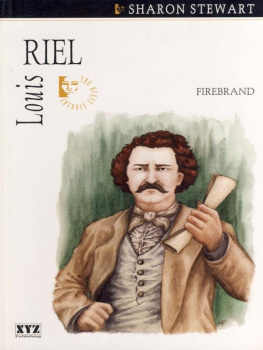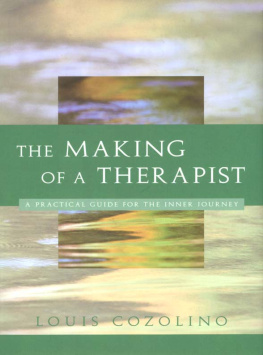Louis Cozolino - Why Therapy Works
Here you can read online Louis Cozolino - Why Therapy Works full text of the book (entire story) in english for free. Download pdf and epub, get meaning, cover and reviews about this ebook. publisher: W. W. Norton & Company, genre: Home and family. Description of the work, (preface) as well as reviews are available. Best literature library LitArk.com created for fans of good reading and offers a wide selection of genres:
Romance novel
Science fiction
Adventure
Detective
Science
History
Home and family
Prose
Art
Politics
Computer
Non-fiction
Religion
Business
Children
Humor
Choose a favorite category and find really read worthwhile books. Enjoy immersion in the world of imagination, feel the emotions of the characters or learn something new for yourself, make an fascinating discovery.
- Book:Why Therapy Works
- Author:
- Publisher:W. W. Norton & Company
- Genre:
- Rating:4 / 5
- Favourites:Add to favourites
- Your mark:
- 80
- 1
- 2
- 3
- 4
- 5
Why Therapy Works: summary, description and annotation
We offer to read an annotation, description, summary or preface (depends on what the author of the book "Why Therapy Works" wrote himself). If you haven't found the necessary information about the book — write in the comments, we will try to find it.
Why Therapy Works — read online for free the complete book (whole text) full work
Below is the text of the book, divided by pages. System saving the place of the last page read, allows you to conveniently read the book "Why Therapy Works" online for free, without having to search again every time where you left off. Put a bookmark, and you can go to the page where you finished reading at any time.
Font size:
Interval:
Bookmark:

Why Therapy
Works
USING OUR MINDS TO
CHANGE OUR BRAINS
Louis Cozolino

W.W. NORTON & COMPANY
New York London
About The Author
Lou Cozolino, PhD, is a writer, professor, and practicing psychologist in Los Angeles, California. In addition to holding degrees in philosophy, theology, and clinical psychology from Harvard and UCLA, he has worked and written in the areas of neuroscience, neuropsychiatry, and education. His clinical interests focus on the recovery from dysfunctional families, childhood trauma, and head injuries, using a combination of psychodynamic and systems approach informed by neurobiology.
Lou lectures around the world on attachment, brain development, evolution, and the synthesis of neuroscience and psychotherapy. In addition to Why Therapy Works, he is the author of The Neuroscience of Psychotherapy 2e, The Making of a Therapist, The Neuroscience of Human Relationships 2e, The Healthy Aging Brain, The Social Neuroscience of Education, and Attachment-Based Teaching. He has also written shorter pieces on child abuse, schizophrenia, language, and cognition. His current interests are in the area of the application of neuroscience and evolution to education and leadership. He is series editor for the Norton Series on Interpersonal Neurobiology and the Norton Series on the Social Neuroscience of Education.
I WOULD LIKE to thank Deborah Malmud and the folks of W. W. Norton for their guidance, support, and hard work in the creation of this book. Thanks also to my colleagues at Pepperdine University, especially Vanessa Davis for her enthusiastic contribution to this effort. I would like to express my gratitude to my Interpersonal Neurobiology family for their kindness, commitment to healing others, and their support for one another, including Bonnie Badenoch, Bonnie Goldstein, Kyra Haglund, Richard Hill, Pat Ogden, Jaak Panksepp, Debra Pearce-McCall, Allan Schore, Dan Siegel, Marion Solomon, Stan Tatkin, and Bessel van der Kolk. A very special thanks goes to Erin Santos who, with great patience and attention to detail, oversaw all aspects of this book, contributed many valuable ideas, and smiled all the way. And finally, thanks to Susan and Sam for warming my heart at the start of each day.
The Norton Series on Interpersonal Neurobiology
Louis Cozolino, PhD, Series Editor
Allan N. Schore, PhD, Series Editor, 20072014
Daniel J. Siegel, MD, Founding Editor
The field of mental health is in a tremendously exciting period of growth and conceptual reorganization. Independent findings from a variety of scientific endeavors are converging in an interdisciplinary view of the mind and mental well-being. An interpersonal neurobiology of human development enables us to understand that the structure and function of the mind and brain are shaped by experiences, especially those involving emotional relationships.
The Norton Series on Interpersonal Neurobiology provides cutting-edge, multidisciplinary views that further our understanding of the complex neurobiology of the human mind. By drawing on a wide range of traditionally independent fields of researchsuch as neurobiology, genetics, memory, attachment, complex systems, anthropology, and evolutionary psychologythese texts offer mental health professionals a review and synthesis of scientific findings often inaccessible to clinicians. The books advance our understanding of human experience by finding the unity of knowledge, or consilience, that emerges with the translation of findings from numerous domains of study into a common language and conceptual framework. The series integrates the best of modern science with the healing art of psychotherapy.
WHY THERAPY WORKS
This book is dedicated to Lennart Heimer,
a great man and a wonderful teacher.
CHAPTER 1
Evolution is a problem-creating as well as a problem-solving process.
Jonas Salk
IF NECESSITY IS the mother of invention, then what necessities gave rise to the invention of psychotherapy? The answer to this question lies in our evolutionary history and how it is expressed in our biology, relationships, and day-to-day experiences. While evolution is a process of adaptation, each adaptation leads to new challenges for which new adaptations need to arise. As most of us have experienced, things that seemed like a good idea initially can have unforeseen consequences and prove to be problematic down the road.
The human mind is made up of a tapestry of genetics, biology, and relationships that allow us to be interwoven into the superorganisms we call families, tribes, and cultures. Our deep evolutionary history accounts for the profound connections among our bodies, minds, and the nature and quality of our relationships. It has also provided us with the ability to heal others in psychotherapy.
Anatomically, modern humans evolved from our primate ancestors around 100,000 years ago. It seems to have taken another 50,000 years for our brains and cultures to evolve sufficient complexity to make us capable of language, planning, and creativity. But alas, this very complexity led to new challenges. The more recently emergent powers of logic, imagination, and empathy are built upon primitive mammalian and reptilian networks that drive our fears, superstitions, and prejudices. Coordinating scores of neural systems from different stages of evolution creates such a high level of complexity that our brains are extremely vulnerable to dysregulation, dissociation, and errors in thinking and judgment.
The artifacts of human prehistory displayed in museums, such as skulls, jewelry, and stone tools, pale in comparison to those inside our heads. Through a million years of conservation, innovation, and mutation, our brains have become a patchwork of old and new systems, many with different languages, operating systems, and processing speeds. At each point in our evolution, survival-based selections were made, allowing our species to adapt to new challenges. These adaptations also set the stage for new problems to arise in the future. Alas, evolution is not a strategic plan for the future but an adaptation to present conditions.
Here are several evolutionary artifacts that account for much of the psychological distress that brings us and our clients to psychotherapy. Although they are divided here for the purposes of definition, you will soon realize that these aspects of brain functioning are interdependent and mutually reinforcing. These core principles serve as the conceptual foundation for the chapters ahead.
Evolutionary Strategies That Result in Psychological Stress
#1 The Vital Half Second
Man is an over-complicated organism who may die out for want of simplicity.
Ezra Pound
As Freud, Charcot, and many before them recognized, our brains have multiple parallel tracks for processing conscious and unconscious information. The first is a set of early evolving, fast systems for our senses, motor movements, and bodily processes that we share with other animals. These primitive systems, which are nonverbal and inaccessible to conscious reflection, are referred to as implicit memory, the unconscious, or somatic memory. These are the memories that we do not consciously remember, but never forget. These fast systems are likely all that our ancestors had until the recent emergence of conscious awareness.
The later-evolving systems involved in conscious awareness, also called the slow systems, eventually gave rise to narratives, imagination, and abstract thought. This slow system, which developed as a result of complex social interactions and the larger brains they require, gave rise to self-awareness and self-reflection. The difference in processing speed between the fast and slow systems is approximately one half second. This vital half second is one of the primary reasons that we need psychotherapy. Let me explain.
Next pageFont size:
Interval:
Bookmark:
Similar books «Why Therapy Works»
Look at similar books to Why Therapy Works. We have selected literature similar in name and meaning in the hope of providing readers with more options to find new, interesting, not yet read works.
Discussion, reviews of the book Why Therapy Works and just readers' own opinions. Leave your comments, write what you think about the work, its meaning or the main characters. Specify what exactly you liked and what you didn't like, and why you think so.

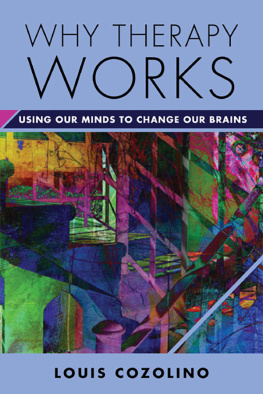

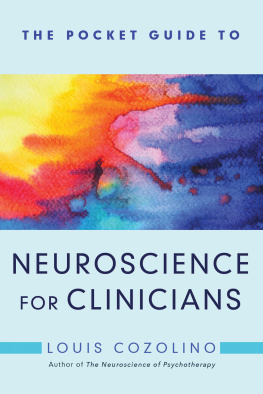

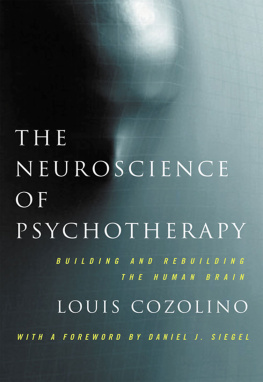
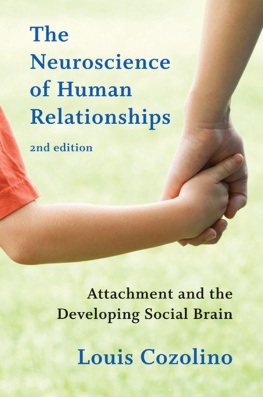


![Louis de Montfort - The Saint Louis de Montfort Collection [7 Books]](/uploads/posts/book/265822/thumbs/louis-de-montfort-the-saint-louis-de-montfort.jpg)
